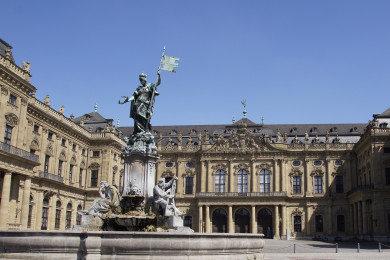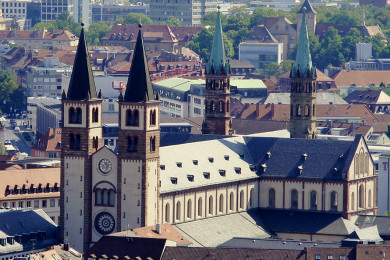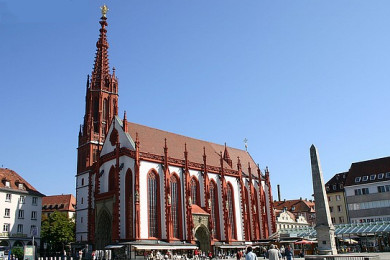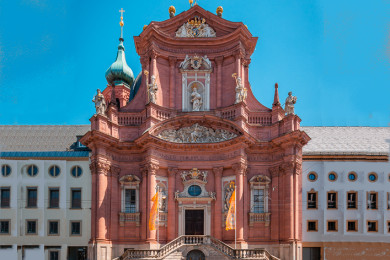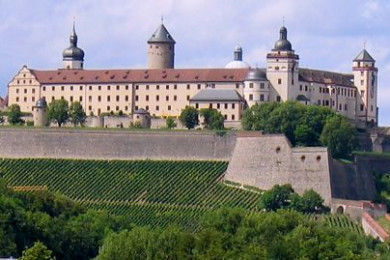
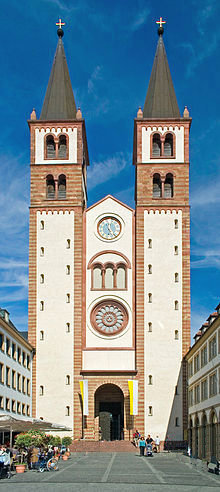
My first impression of the interior of the cathedral left me very confused. The simple Romanesque structure of the nave does not fit at all with the Baroque choir richly decorated with white stucco.
In its present basic form and external appearance, St. Kilian's Cathedral dates back to a reconstruction begun by Bishop Bruno (1034-1045) and completed in 1188. With a total length of 105 meters, it is the fourth largest Romanesque church in Germany and a major work of German architecture at the time of the Salian emperors. The famous Baroque architect Balthasar Neumann added the Schönborn Chapel to the northern transept in 1718-1736. The interior of the church underwent drastic changes: the vaulting of the nave and transept at the beginning of the 17th century was followed by stuccoing by Pietro Magno in the style of the Italian High Baroque in 1701-1705.
During the air raid on Würzburg in 1945, the cathedral was completely burned out; one year later, the nave collapsed. Reconstruction lasted until 1967; the stucco in the choir and transept was restored, while the nave received a flat ceiling.
The cathedral still has a wealth of important works of art, including a 13th-century Epiphany group and a Renaissance pulpit. Particularly impressive is the sequence of bishop's tombs that began in 1190. Among the stately row are masterpieces made by Tilman Riemenschneider with images of bishops Rudolf von Scherenberg (d. 1495) and Lorenz von Bibra (d. 1519). To the south is the Gothic cloister and the sepulture chapel with modern stained glass by G. Meistermann.

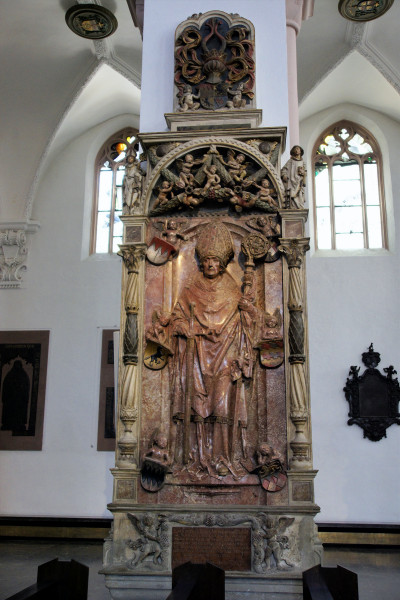
Left picture: Tomb monument of Prince-Bishop Rudolph von Scherenberg. On the right, the epitaph of his successor, Prince-Bishop Lorenz von Bibra, also a work by Riemenschneider.
Cloister at St. Kilian's Cathedral

A view into the nave. In front the bright choir with white stucco and behind it the sober reconstructed Romanesque nave. Click on the picture to enlarge it!
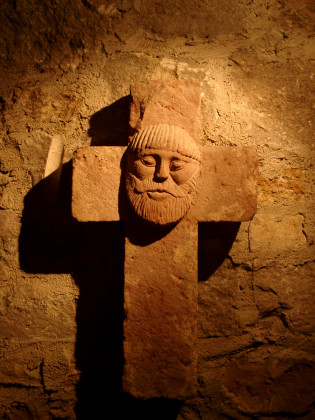
Merovingian cross in the crypt

